Preschool is the perfect time to introduce children to exciting themes that spark their curiosity and help them learn foundational skills. One of the best-loved themes for preschoolers is farm life! With animals, crops, and all the fascinating things found on a farm, this theme offers endless opportunities to develop early literacy, math, and fine motor skills in a hands-on way. Here’s how you can create a farm-themed unit in your classroom or at home, complete with an interactive farm product that covers a wide range of activities to keep your little ones engaged and learning using our Farm Activties for Preschool packet!
To download some free sample pages from this packet, click here or on the button below. Links to purchase the complete 93-page Farm Activities for Preschool pack are included at the end of this post!
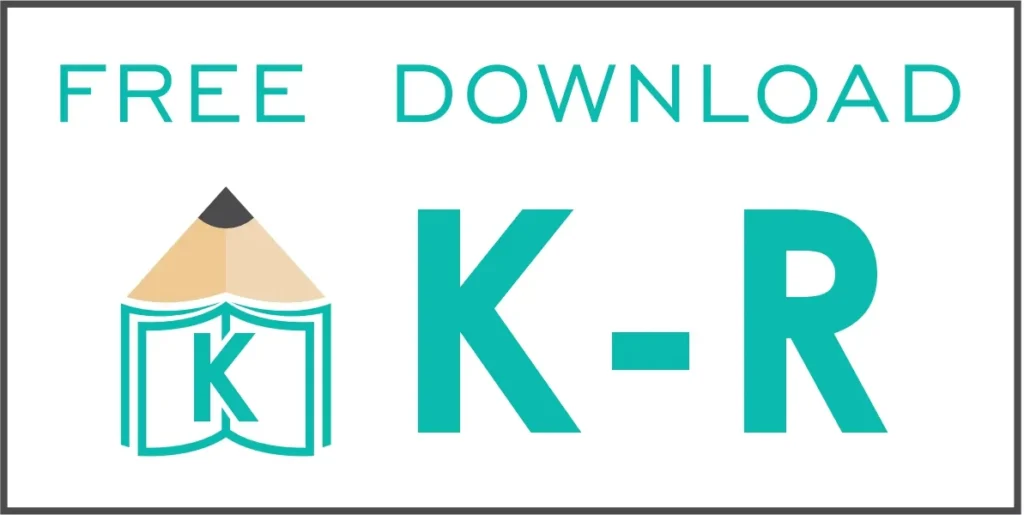
Why Choose a Farm Theme?
Farm activities for preschool naturally lend themselves to learning opportunities in many developmental areas:
- Language and Literacy: Children can explore letter recognition, beginning sounds, sight words, and storytelling.
- Math: Numbers, counting, patterns, and size comparison can be easily integrated.
- Fine Motor Skills: Cutting, tracing, sorting, and placing small objects encourage the development of fine motor control.
- Science: Life cycles of farm animals and plants offer fun ways to introduce sequencing and basic biology.
Ready to dive in? Let’s look at a fantastic farm-themed resource that can bring these concepts to life!
Farm Activities for Preschool: Hands-On Fun and Learning!
This comprehensive Farm Activities for Preschool packet is packed with engaging, interactive tasks that encourage hands-on learning. With activities ranging from letter matching to counting, pre-writing, and fine motor skills, this resource offers everything you need for a complete farm unit. Here’s what’s included!
1. Fine Motor Practice Mat (Sheep)
This activity is designed to strengthen fine motor skills by having children place small objects like pom-poms or beans into circles on a laminated sheep mat. The simple action of picking up and placing objects refines hand-eye coordination and finger dexterity, skills essential for writing and cutting. It can be used in small groups or as an independent task, providing a calming, focused experience for preschoolers.

2. Farm Write and Wipe Pre-Writing Cards
These pre-writing cards are an excellent resource for developing early writing skills. Children trace different patterns and lines on laminated cards using a dry-erase marker, which helps them practice the fine motor control needed for proper letter formation.
To add a sensory element, these lines can also be traced in a sand tray, a calming and tactile method for pre-writing practice. To make a sand tray, simply fill a shallow tray or box with a thin layer of sand or salt. Children can use their fingers or a small stick to trace the lines, helping to reinforce muscle memory and improve their hand-eye coordination. This multi-sensory approach engages children in different ways, making it an ideal activity for daily writing practice that supports both fine motor development and sensory exploration.
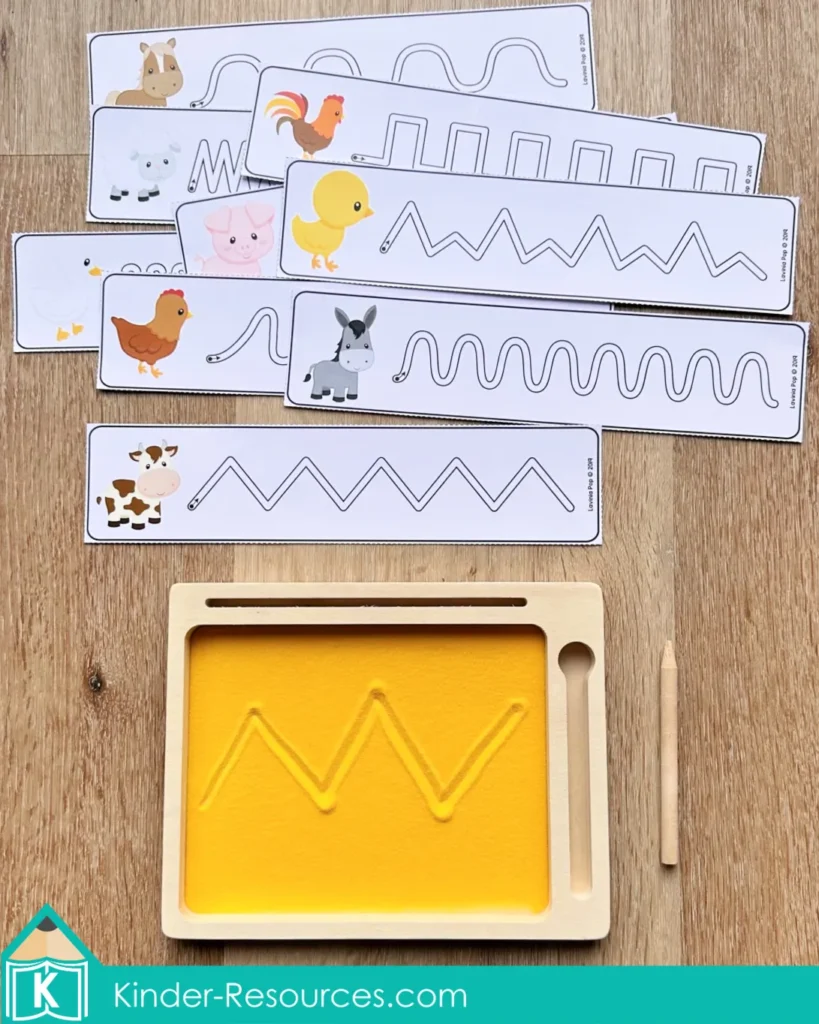
3. Farm Hen and Eggs Letters and Beginning Sounds Match
This phonics-based activity offers flexible learning by allowing children to match lowercase letters with hens that feature the corresponding capital letter. You can use just the letter eggs to focus on letter matching, helping students build their letter recognition skills, or use only the picture eggs to practice identifying beginning sounds. For a more advanced challenge, combine both letter and picture eggs to reinforce phonemic awareness and letter-sound correspondence.
To make the activity even more engaging, attach the eggs to clothes pegs so children can clip them onto the chicken cards, adding an extra layer of fine motor skill practice while reinforcing their phonics learning. This hands-on activity strengthens key early reading skills while keeping young learners actively involved.
Alternatively, consider hiding the eggs in a “straw” sensory bin—fill a shallow container with straw-like materials or shredded paper, and hide the eggs within. Children can dig through the sensory bin to find the eggs and then match them to the appropriate hen cards. This sensory-rich experience not only supports phonics learning but also adds a tactile and exploratory element to the activity, making it both educational and fun.
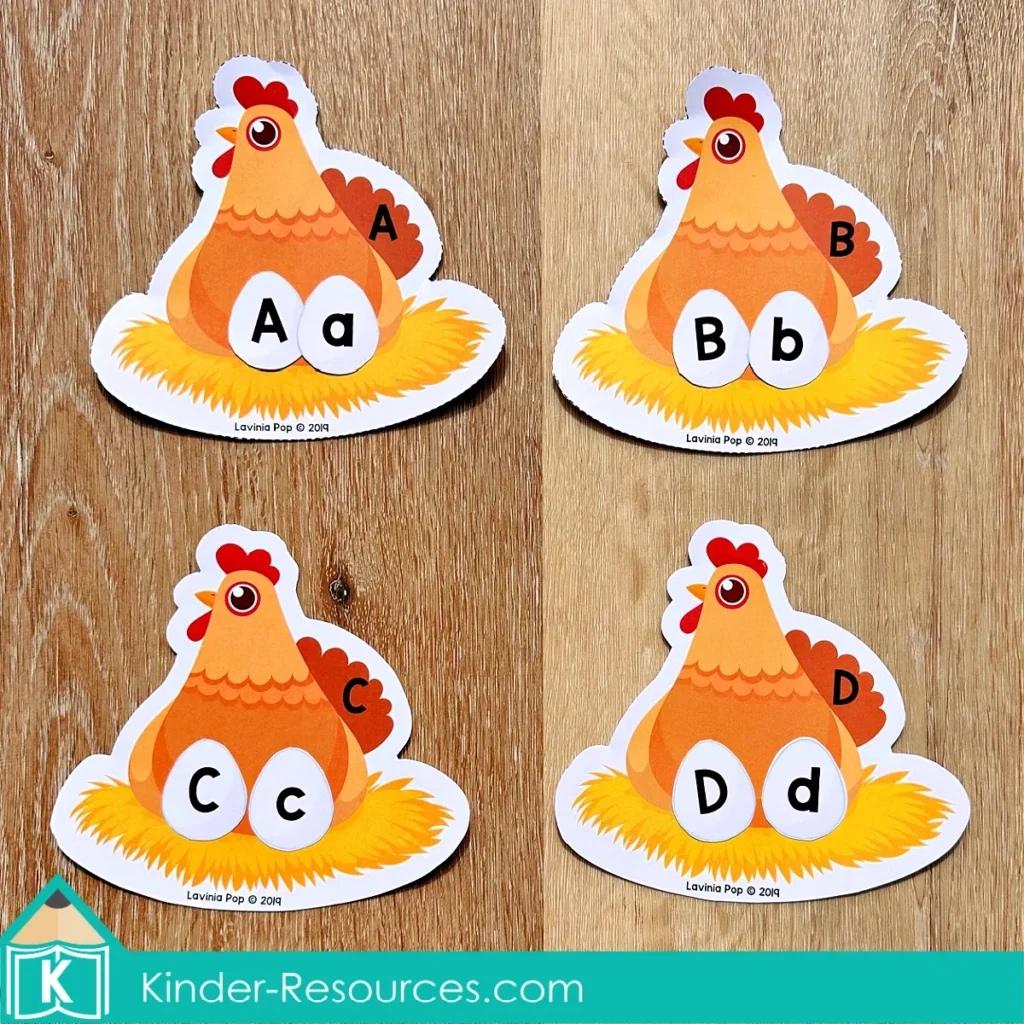
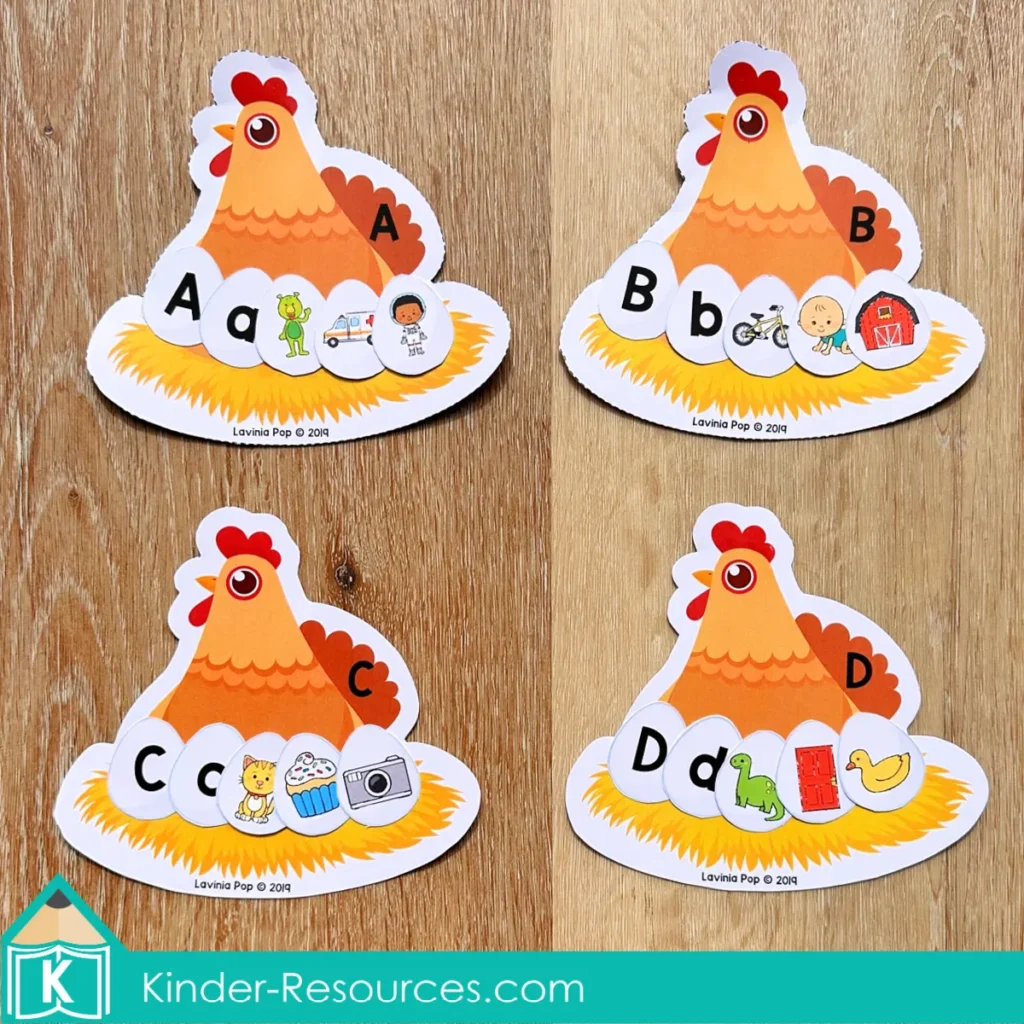

4. Farm Syllables
This activity encourages children to count syllables using small objects, such as tokens or counters, which they place on corresponding syllable cards. This hands-on approach to syllable counting is not only fun but also supports phonological awareness, an essential skill for reading fluency. Learning to break words into syllables helps children decode longer words more easily and improves their overall literacy development.
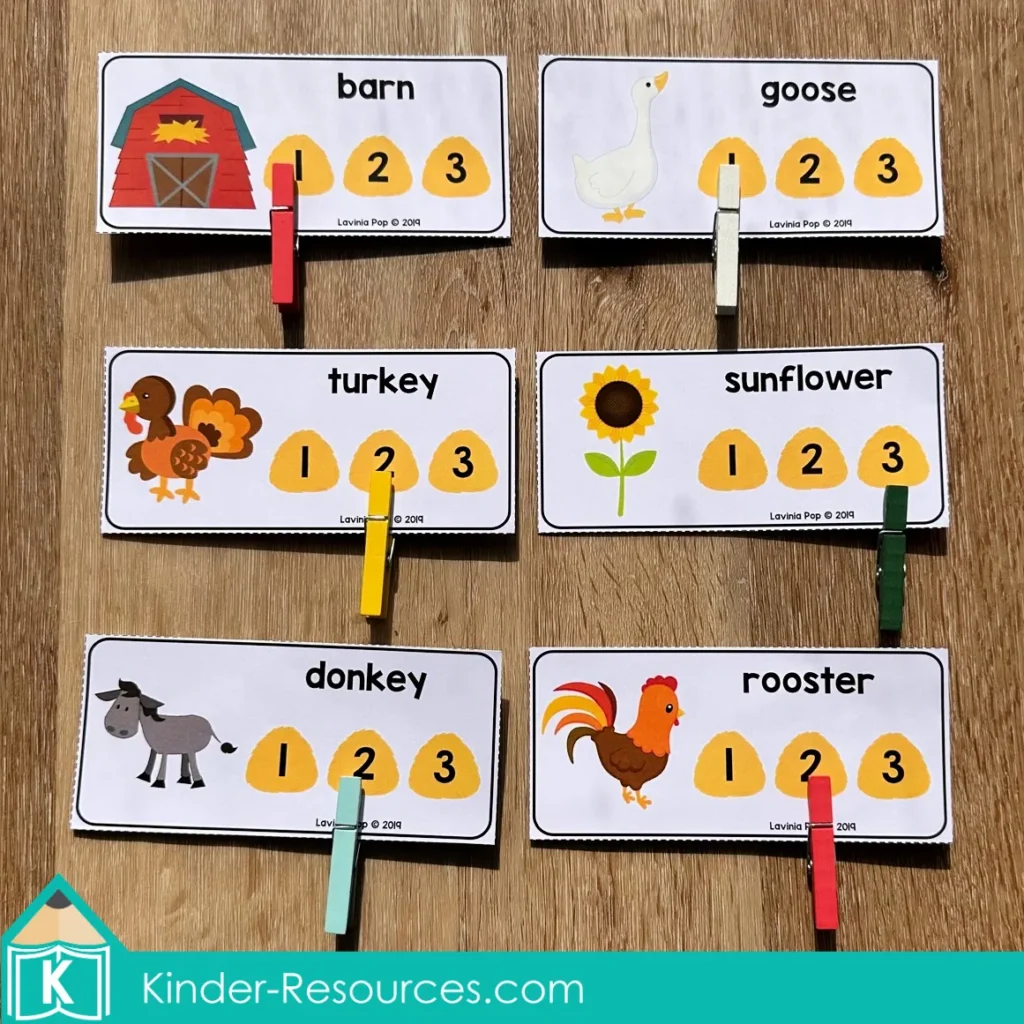
5. Farm Chicken Coop CVC Word Match (5 Pages)
In this activity, children match pictures with simple consonant-vowel-consonant (CVC) words to complete the chicken coop, promoting word recognition and early phonics skills. CVC words are often the first words young readers learn to decode, making this an essential activity for building early reading confidence. The association between pictures and words strengthens vocabulary, as children learn to link written words with images they recognize. This visual aid is particularly helpful for emerging readers, as it supports their comprehension and reinforces phonetic patterns. This activity also allows children to practice sounding out and blending individual sounds, crucial steps in mastering basic reading skills.
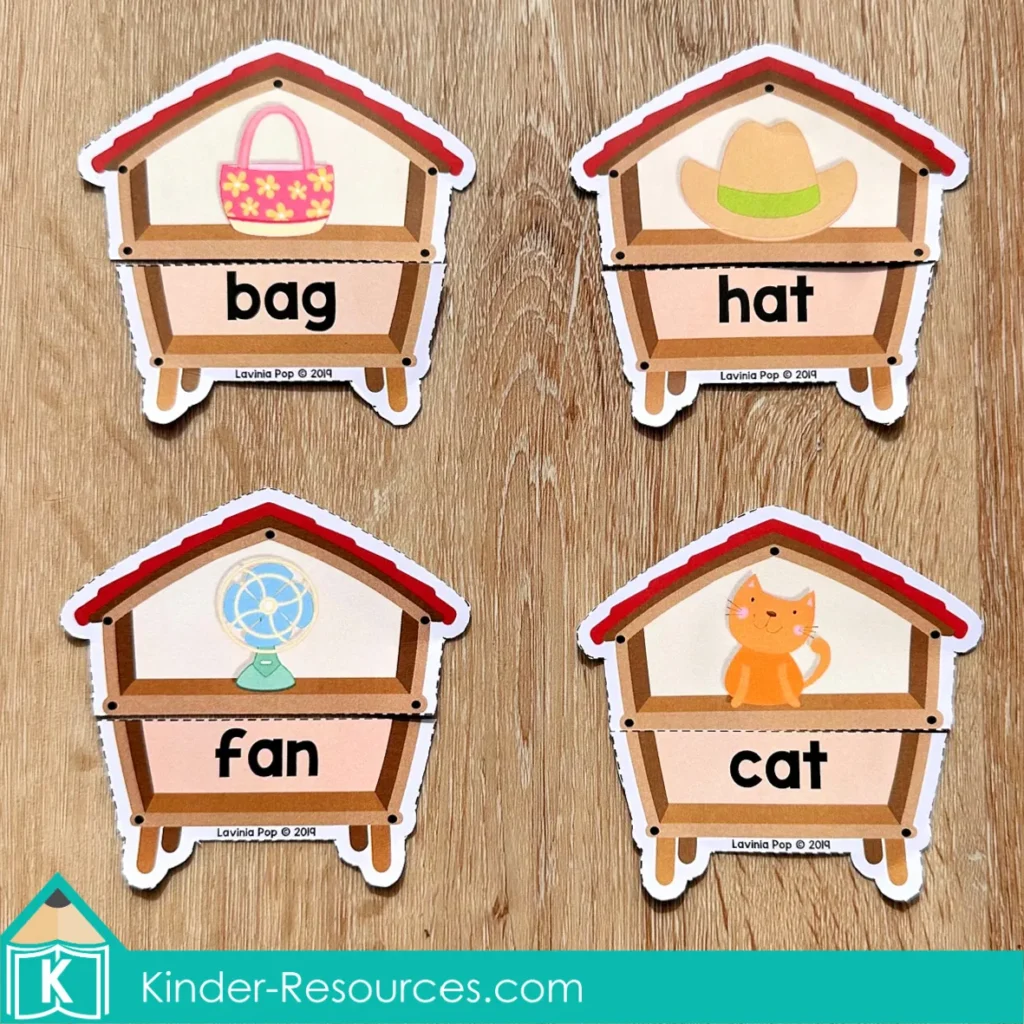
6. Rhyming Sheep
This phonemic awareness activity involves matching rhyming pictures, which helps children develop their ability to identify sound patterns in words. Recognizing and producing rhyming words is an important skill in early literacy, as it teaches children to listen for similar ending sounds, improving their ability to decode unfamiliar words later on. Rhyming activities also strengthen auditory memory and processing, key components for language development. The visual and interactive nature of this game keeps young learners engaged, while also providing essential practice in listening for and identifying rhyming pairs. Mastering rhyming enhances a child’s understanding of word families and helps with spelling patterns as they begin to read more complex texts.

7. Farm Carrots Pre-Primer Sight Word Building (40 Sight Words)
In this activity, children use carrot-shaped tiles to build sight words, which are key to reading fluency. By focusing on high-frequency words, this task helps young learners quickly recognize common words by sight, allowing them to read more smoothly and confidently. Repeated exposure to these sight words reinforces their spelling and meaning, essential for independent reading. For added engagement, you can attach the carrot tiles to clothes pegs, allowing children to clip the tiles onto a word chart or a designated spot as they build words. This method not only reinforces sight word recognition but also adds a fun, hands-on element to the activity.
For an additional sensory experience, consider creating a sensory bin filled with materials such as rice, beans, or sand, and hiding the carrot tiles within. Children can dig through the sensory bin to find the tiles and then use them to build sight words. This approach combines tactile exploration with literacy practice, making learning both interactive and enjoyable.
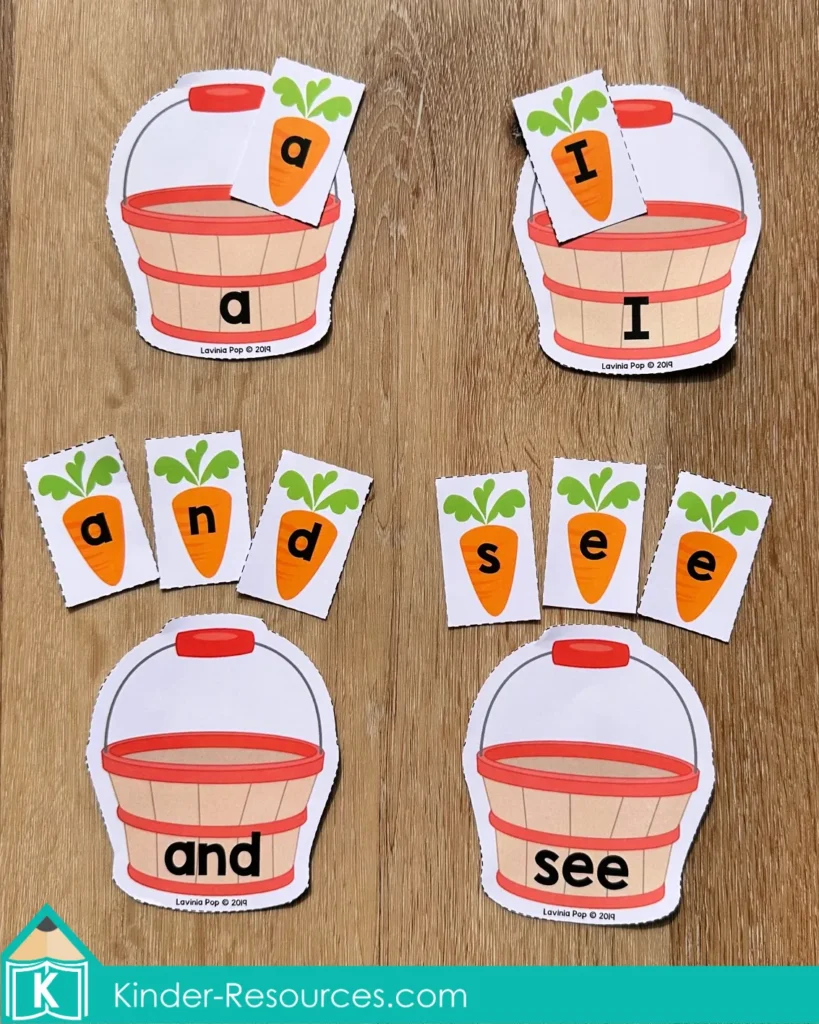
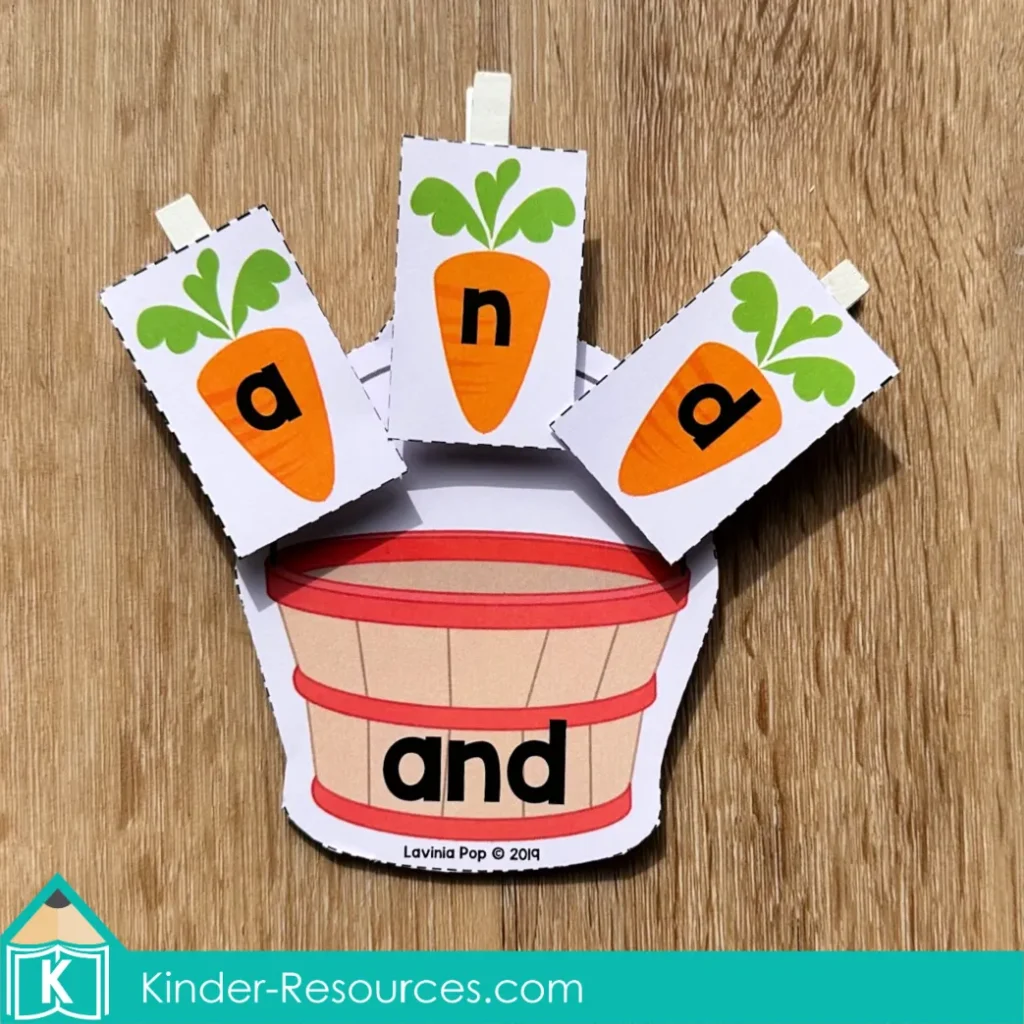
8. Farm Mother Duck and Ducklings Number Match
Children match numbers on ducklings to their corresponding mother ducks, helping them practice number recognition and counting skills. This activity supports early math concepts like number order and one-to-one correspondence, which are foundational for more advanced mathematical skills. It’s also an interactive way for children to engage with numbers in a playful, farm-themed context. Additionally, children can order the different representations on mother duck and ducklings in numerical order.
To add a creative twist, you can attach ducklings with numbers 1-5 onto popsicle sticks. These number sticks can be used to sing the popular nursery rhyme “Five Little Ducks,” making the activity both educational and entertaining. As you sing, children can hold up the numbered ducklings.

9. Farm Peas in a Pod Counting
This counting activity helps children reinforce number recognition and basic counting skills by matching the correct number of peas to their corresponding pod cards. For added versatility, children can use a variety of materials such as real dried peas, counters, the cutouts from the resource, or even pom-poms glued to clothes pegs to represent the peas. This tactile approach caters to different learning styles and keeps the activity engaging. By physically placing the peas or counters on the pods, children gain a hands-on understanding of numbers and counting, making this activity a practical and interactive way to support early math development.

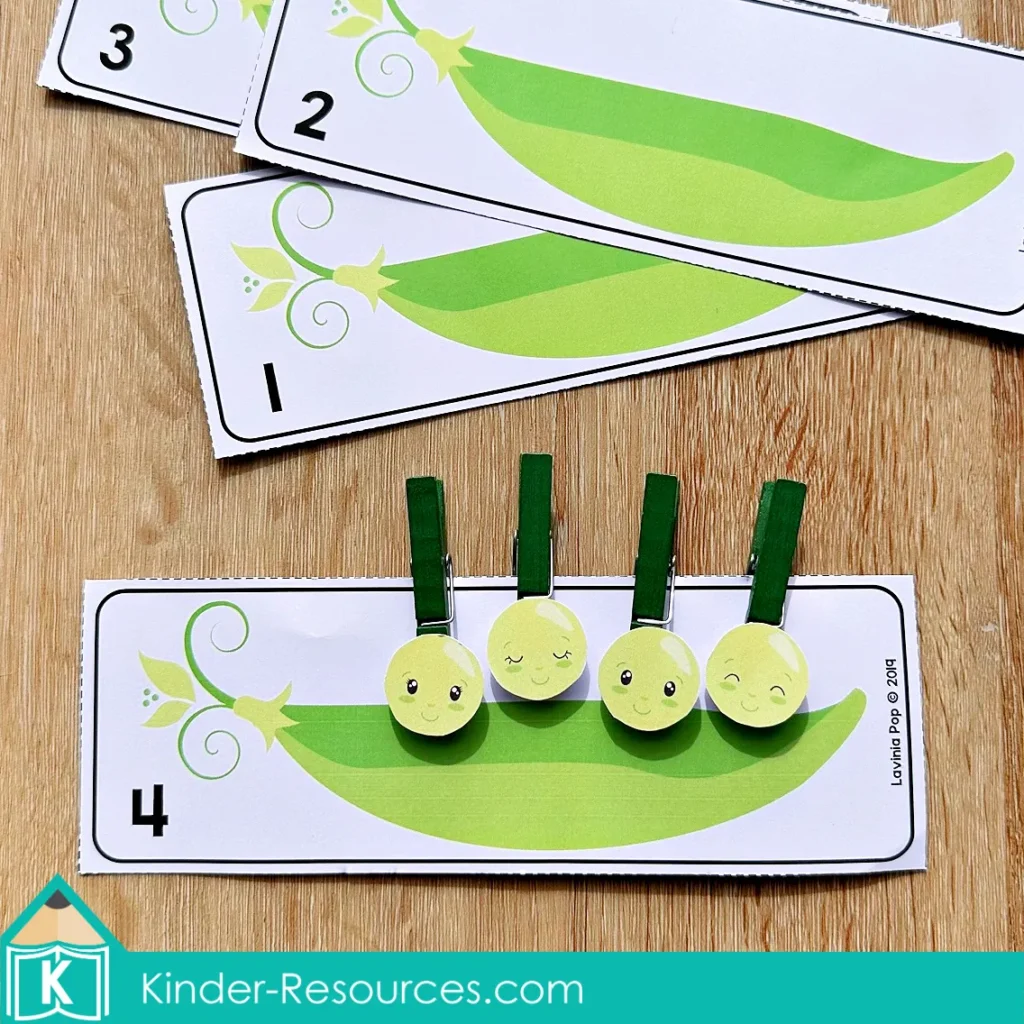
10. Barn and Turkey Shape Matching
This activity requires children to match turkeys to barns based on shapes, helping them develop shape recognition and early geometry skills. Identifying and categorizing shapes is an important cognitive skill that also supports mathematical reasoning. The colorful, themed pieces make the activity engaging and visually stimulating for preschoolers.
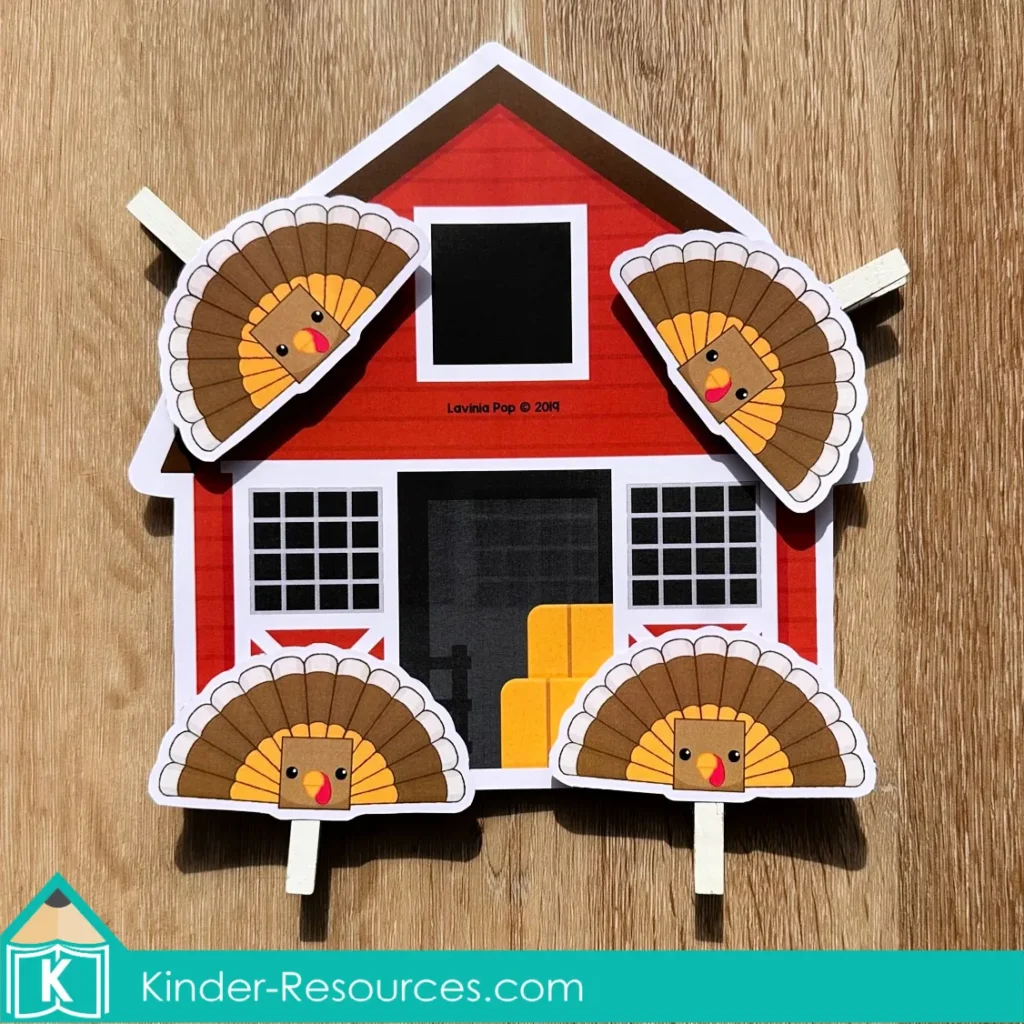
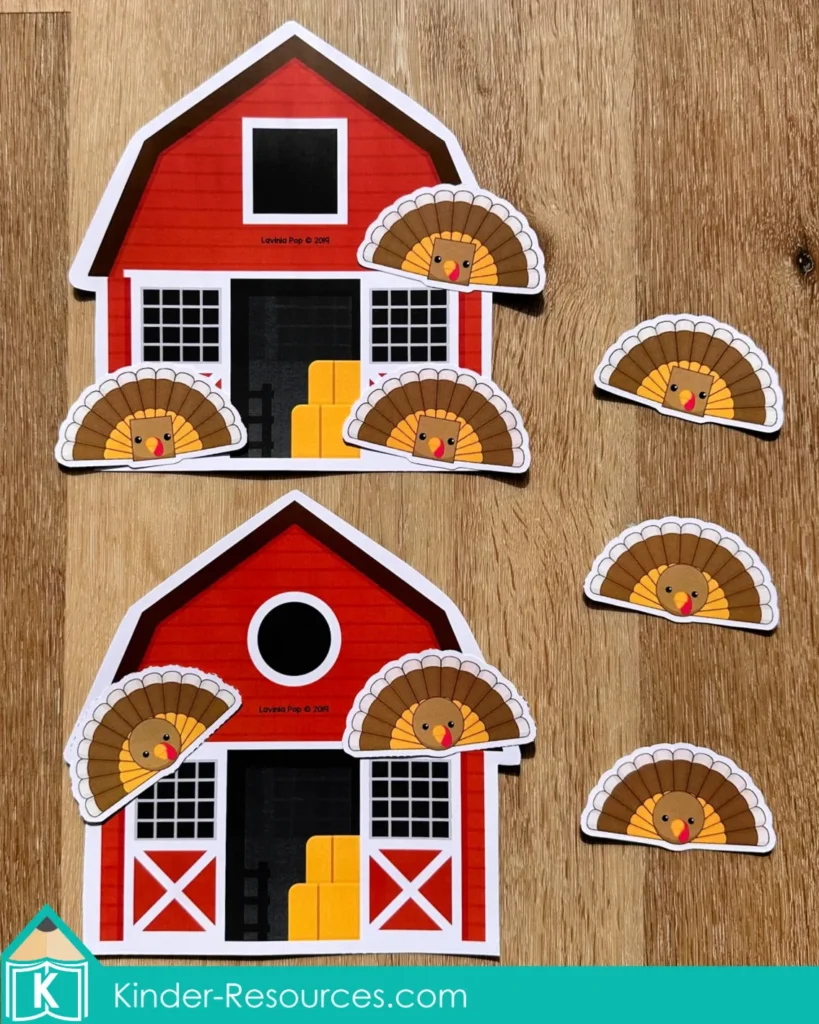
11. Farm Chick and Egg Color Matching
In this activity, children match chicks to eggs based on color, reinforcing color recognition and sorting skills. To make the activity more interactive, you can attach the heads of the chicks to clothes pegs, allowing children to clip them onto the matching bottom halves of the eggs. This hands-on approach adds an element of fine motor skill development as children practice clipping and matching. Additionally, children can use colored counters to sort and place on the eggs, providing another layer of color recognition practice. This multi-faceted activity not only supports color identification but also engages children in sorting and fine motor exercises, making learning both fun and educational.
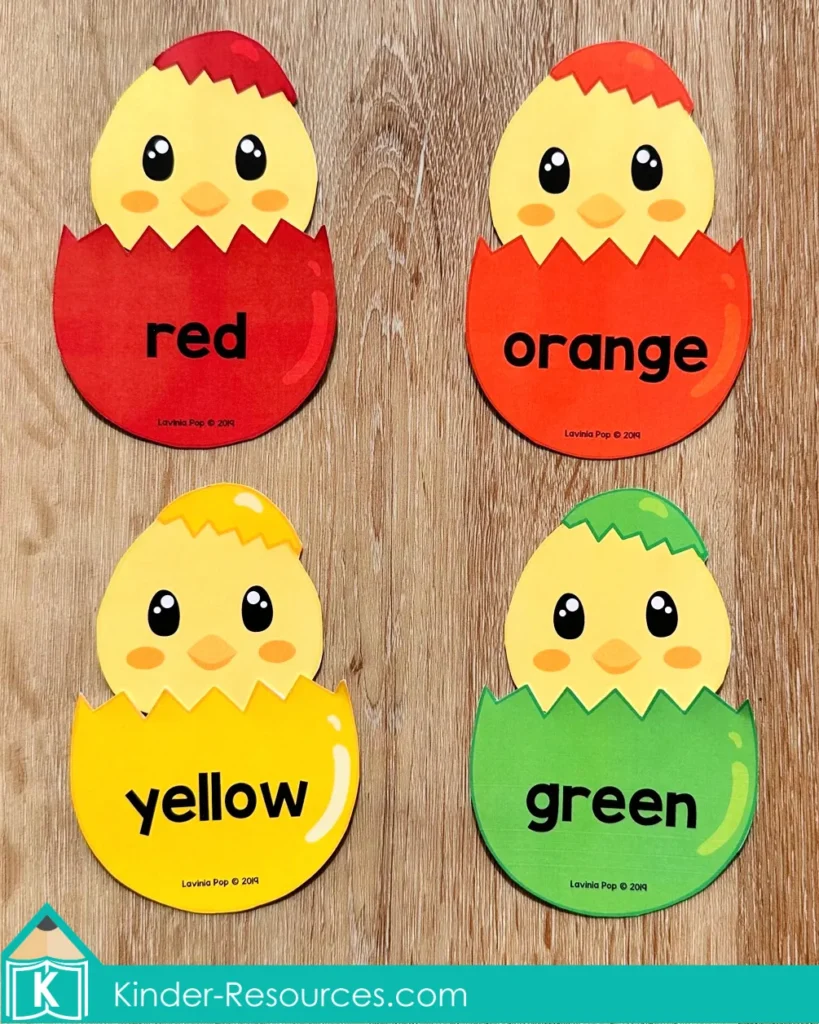
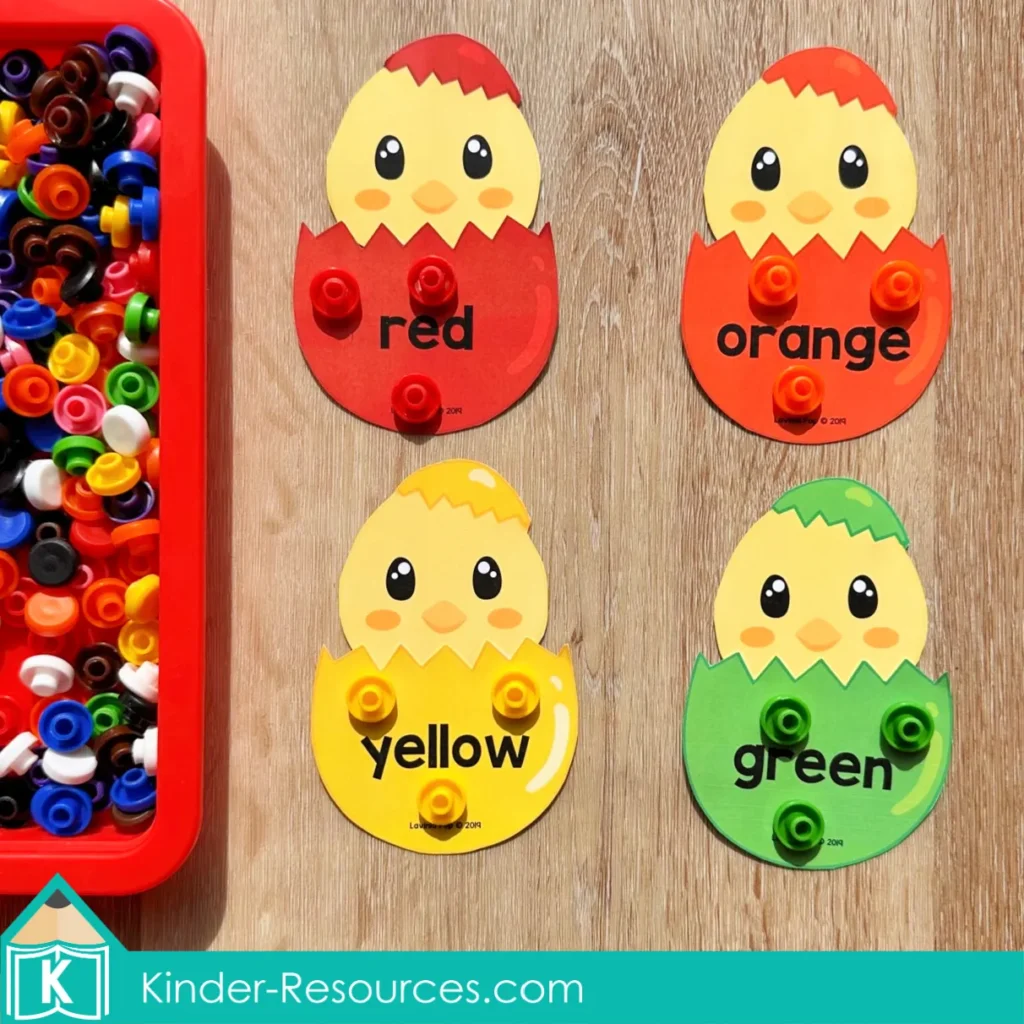
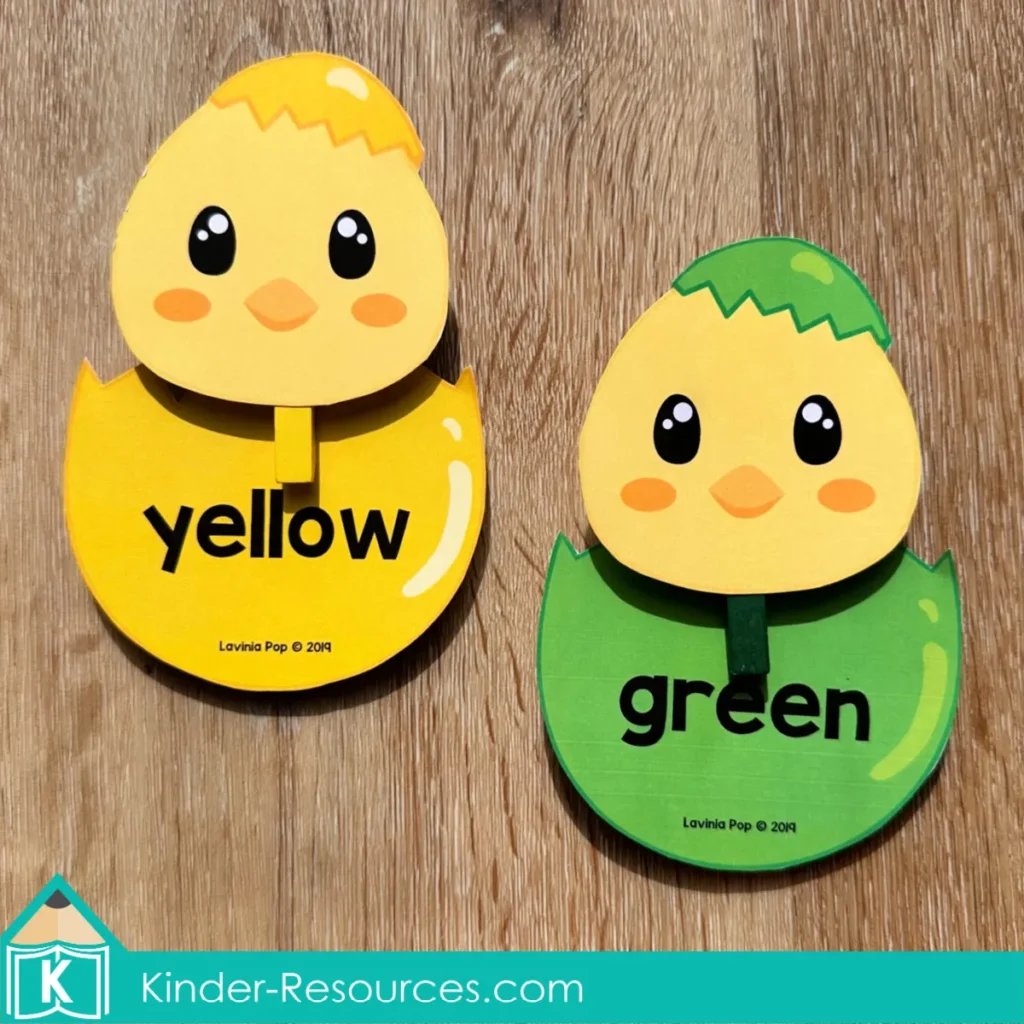
12. Which Picture is Different? Farm Cards
This visual discrimination activity helps children identify which picture on the card is different from the others. It enhances observation skills and attention to detail, which are crucial for reading and writing tasks. Identifying differences also encourages problem-solving and critical thinking as children must evaluate the images carefully.
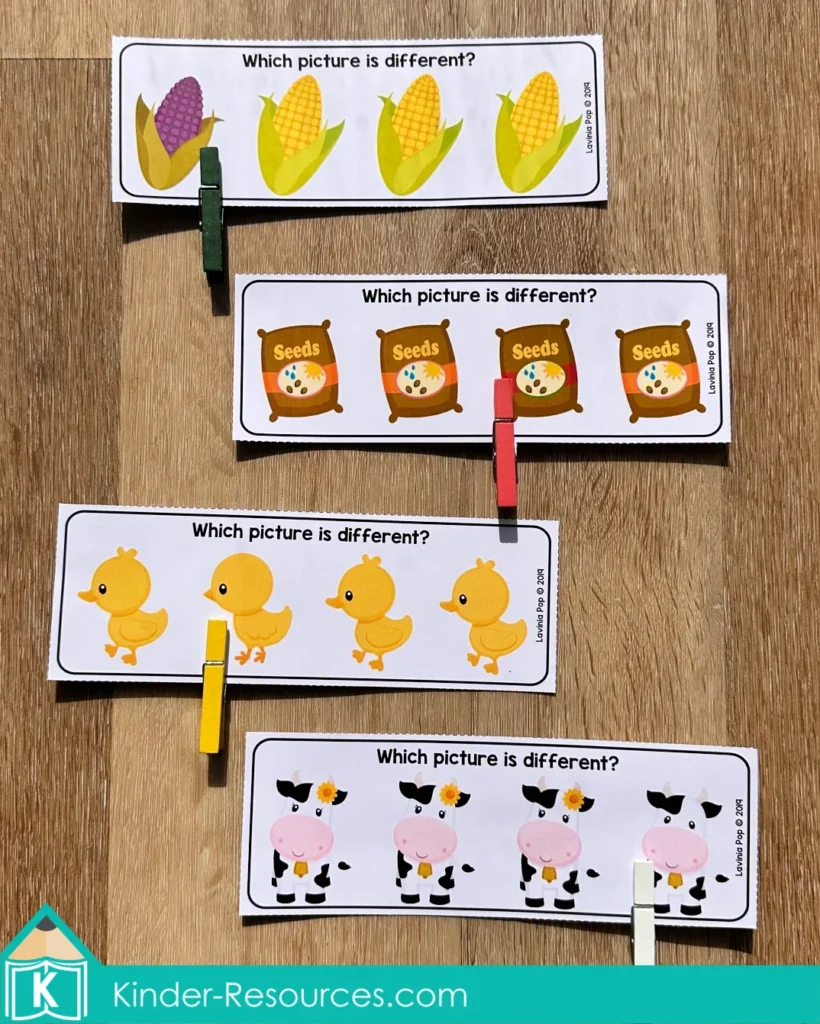
13. What Doesn’t Belong? Farm Cards
Similar to the previous activity, this game asks children to identify which picture doesn’t belong in a set. This task enhances categorization skills and logical thinking, as children must group similar items and explain their reasoning. It also improves attention to detail and helps young learners understand classification concepts, which are important for both literacy and math.
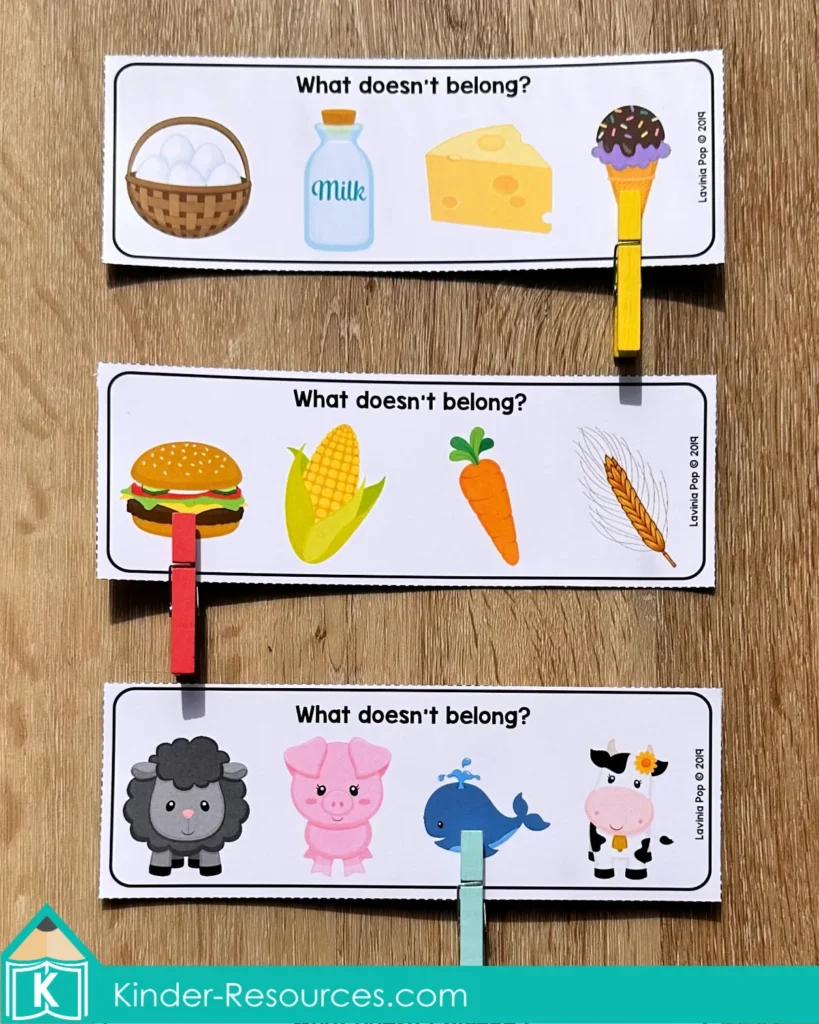
14. Farm Shadow Matching
In this matching game, children pair farm-themed images with their corresponding shadows, developing their visual matching and discrimination skills. Recognizing the shape of objects and their shadows strengthens spatial awareness, which is an important component of early math and reading comprehension. It’s a fun, engaging way for children to practice matching skills.
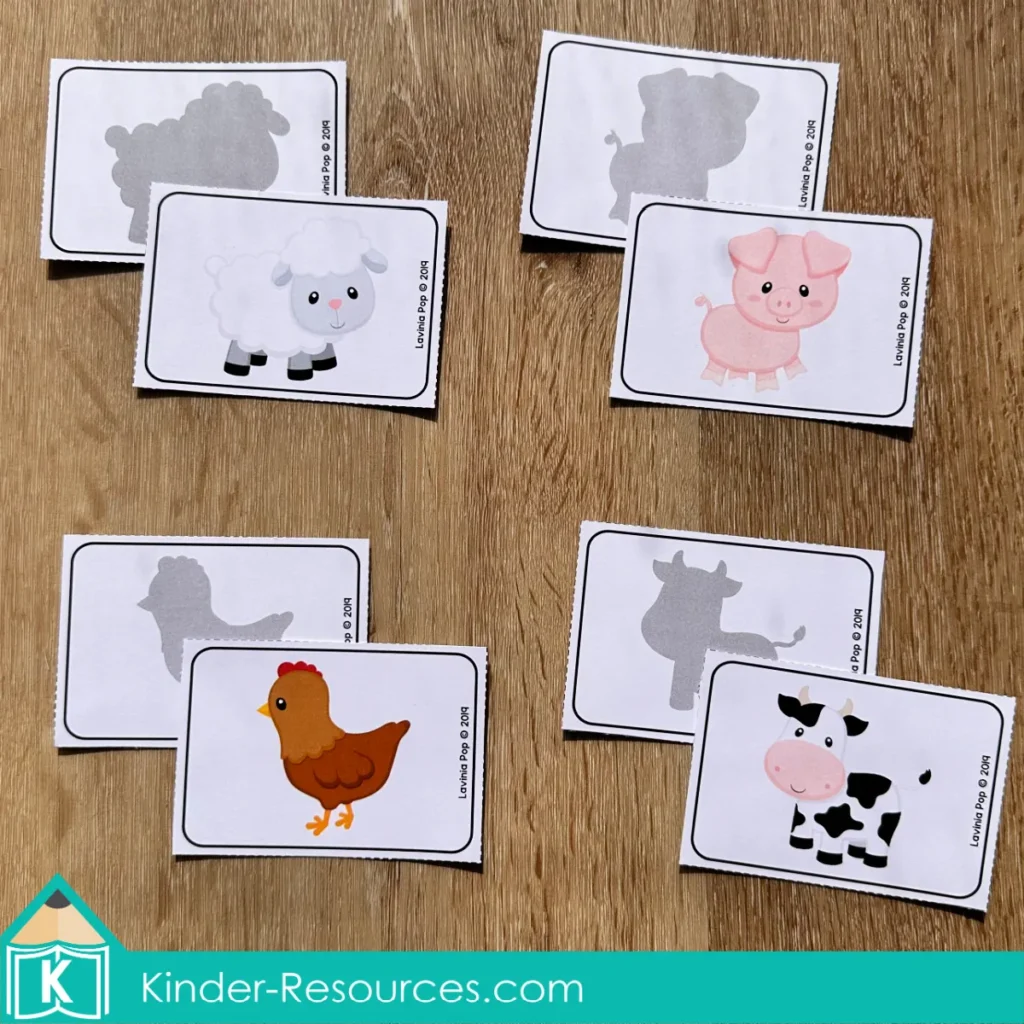

15. Farm Sequencing Cards: Life Cycle of a Chicken and Tomato Plant
These sequencing cards teach children about the life cycles of a chicken and a tomato plant. Sequencing is a key cognitive skill that supports logical thinking, comprehension, and the ability to understand cause-and-effect relationships. Learning about life cycles also introduces basic science concepts in a fun, farm-related context.
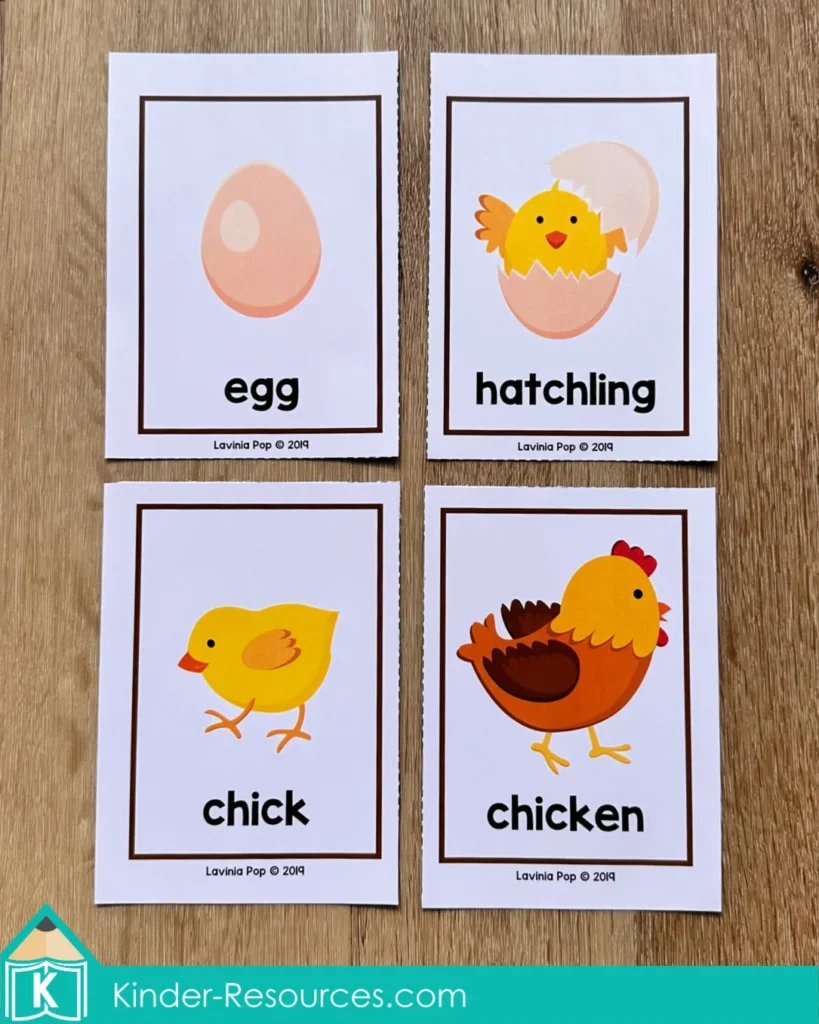
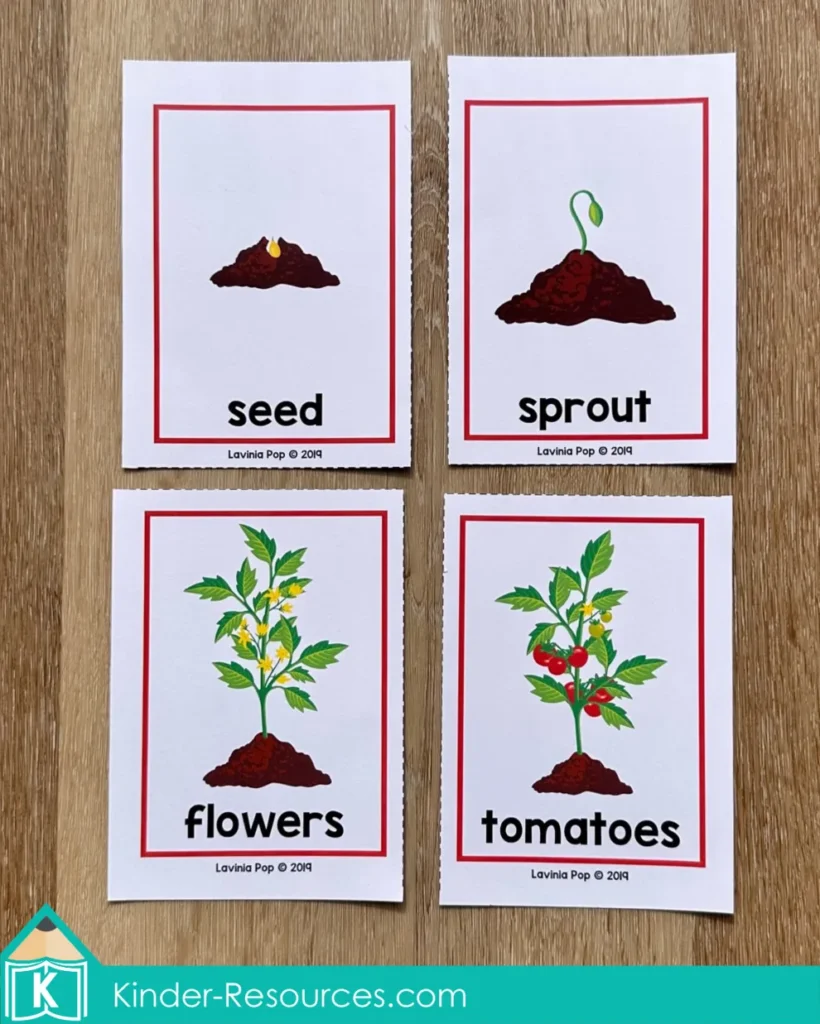
16. Farm Size Sorting (Small, Medium, Large)
In this activity, children sort animals into barns based on size (small, medium, large), helping them understand size comparison and classification. These early math concepts lay the foundation for understanding measurement and data organization. Sorting by size also enhances visual discrimination and observation skills.
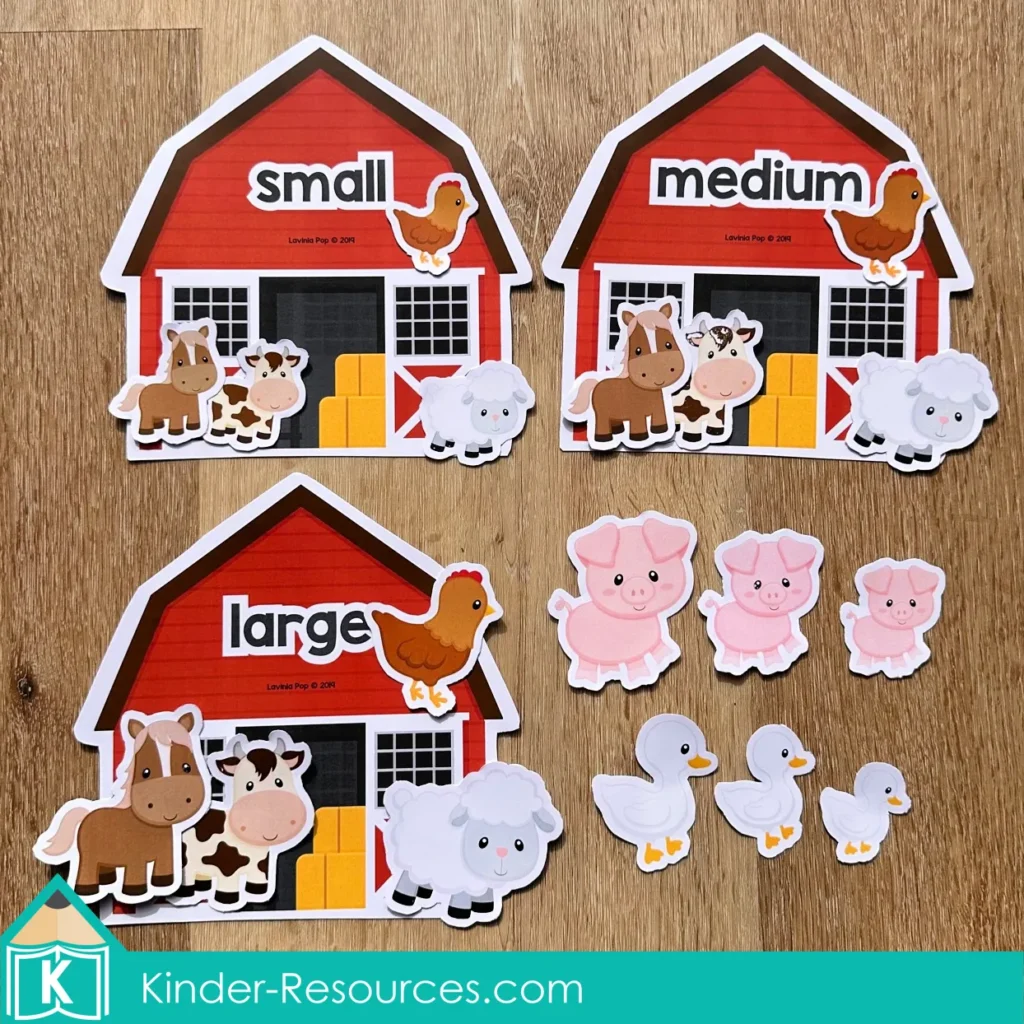
17. Farm Patterns (AB)
This pattern activity asks children to identify and complete AB patterns using farm-themed pictures. Recognizing and completing patterns is an important early math skill that supports algebraic thinking and problem-solving. It also helps children understand predictability and order, which are useful in both math and literacy learning.

Benefits of the Farm Actvities for Preschool Packet
- Multi-Skill Development: From literacy and math to fine motor and cognitive skills, this pack covers all the basics preschoolers need to practice while having fun.
- Hands-On Engagement: Children learn best when they are active participants. These activities encourage movement and interaction with objects, making learning a playful experience.
- Variety and Flexibility: Whether you’re looking for letter recognition, counting practice, or fine motor skill development, this pack offers something for every child’s learning needs.
So, get ready to bring the magic of the farm to your classroom or home with this fun-filled activity pack! Your little learners will love exploring the world of farm animals, crops, and more while building essential early childhood skills.
Happy Teaching! 🙂
Purchase the Farm Activities for Preschool
To purchase the complete 93-page Farm Activities for Preschool packet, click on either store link below.
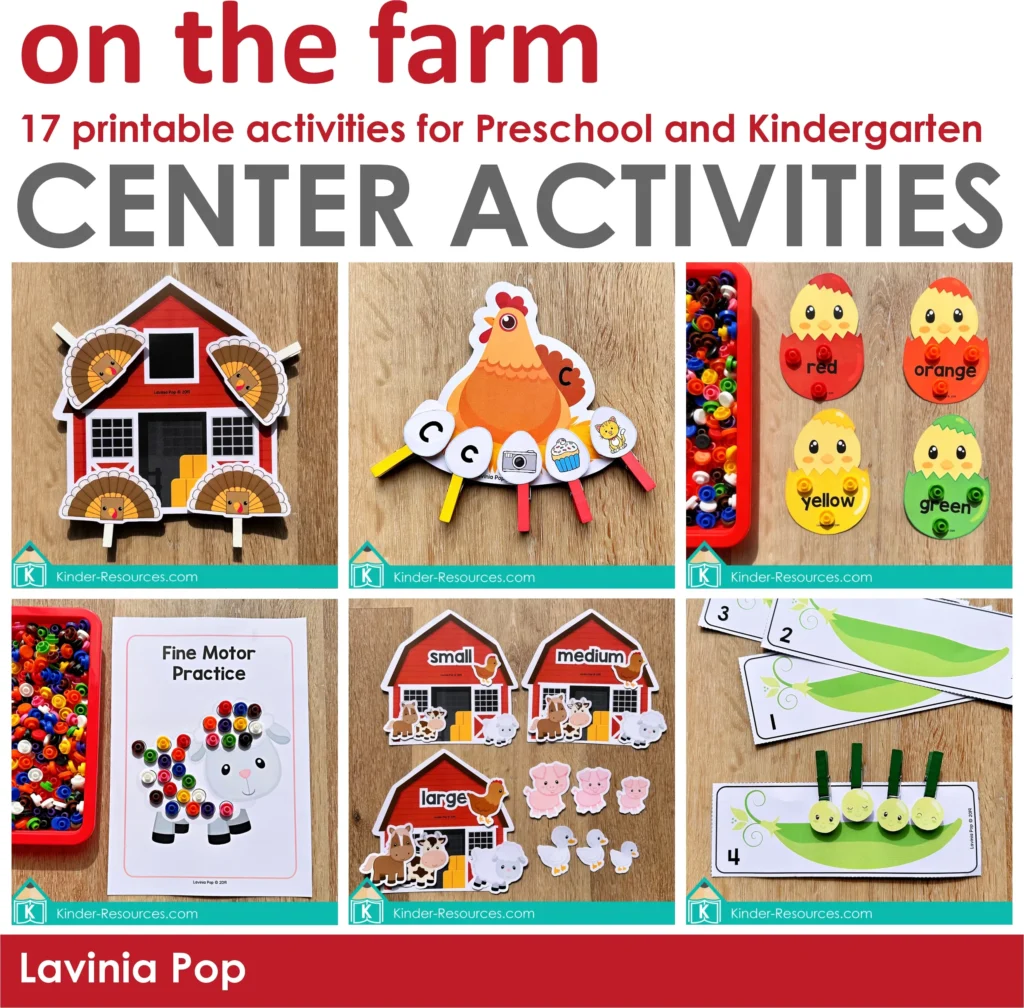

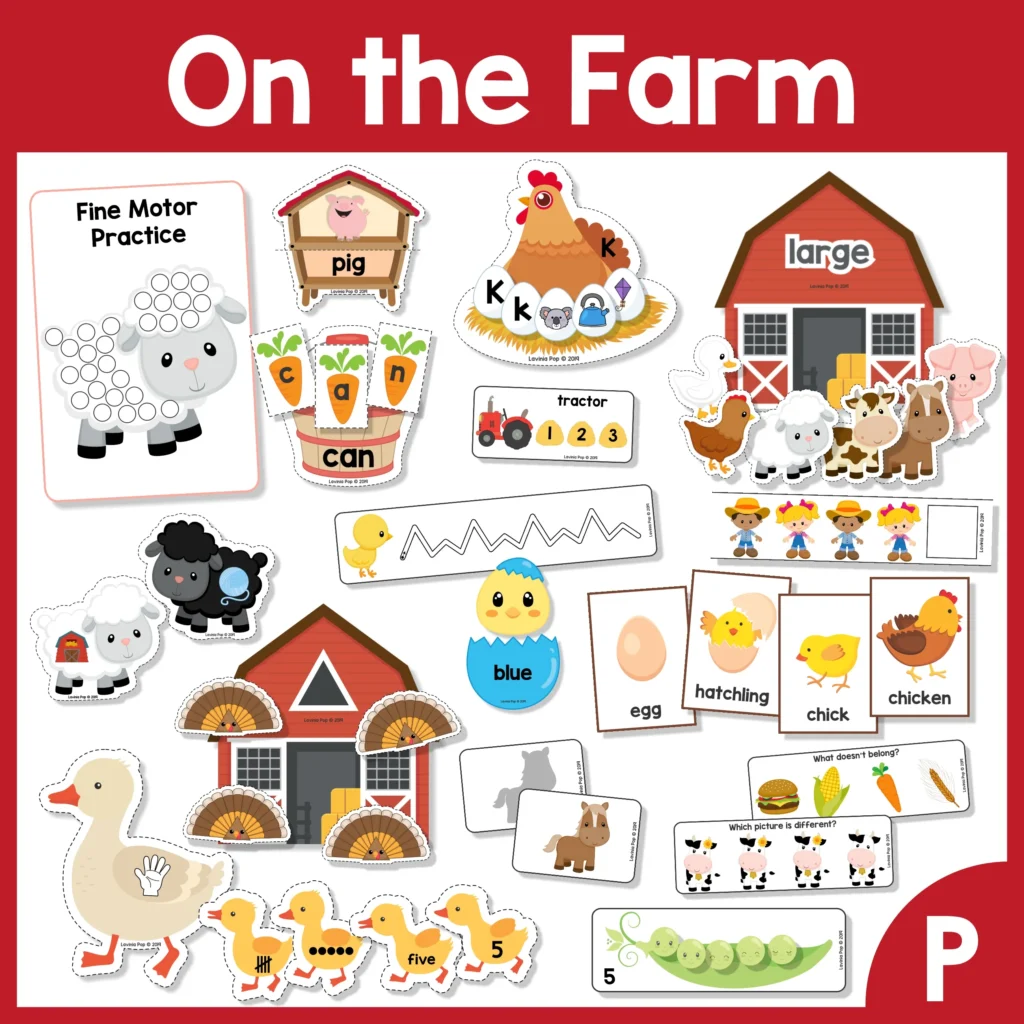

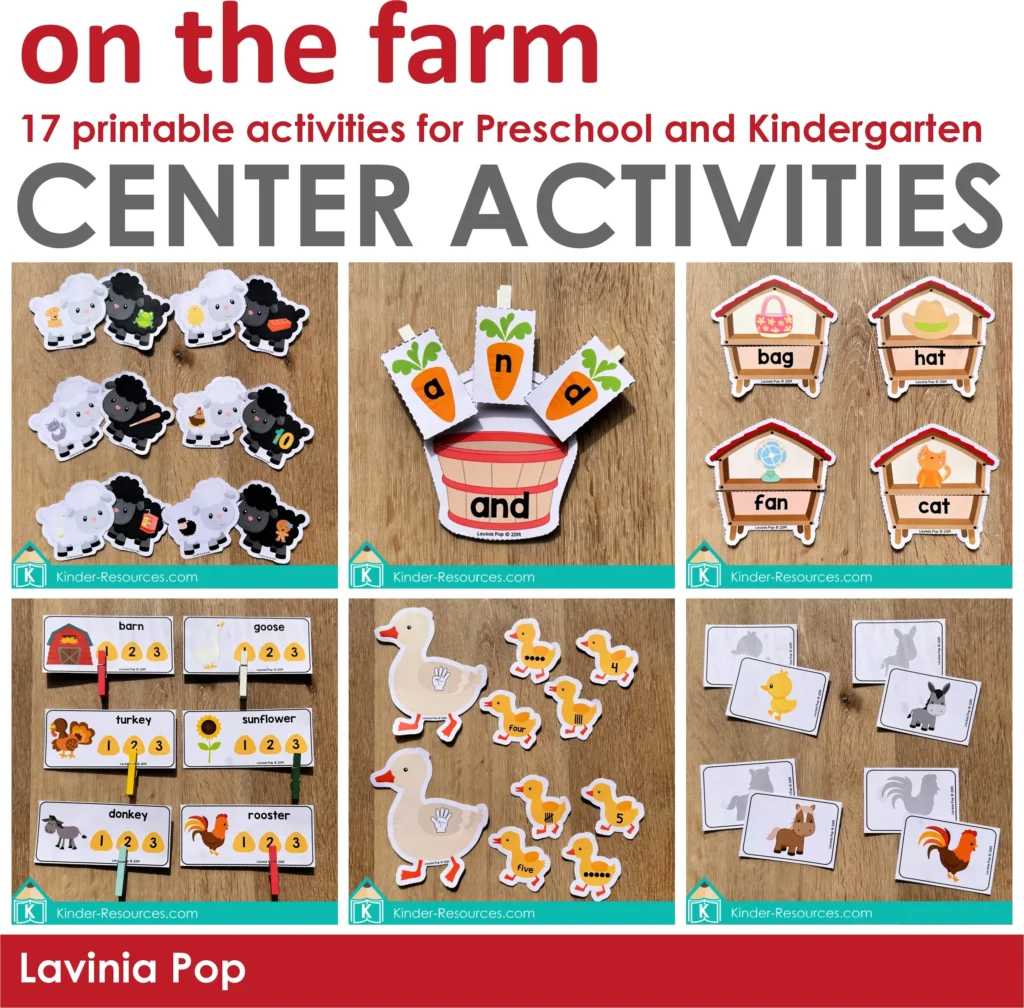
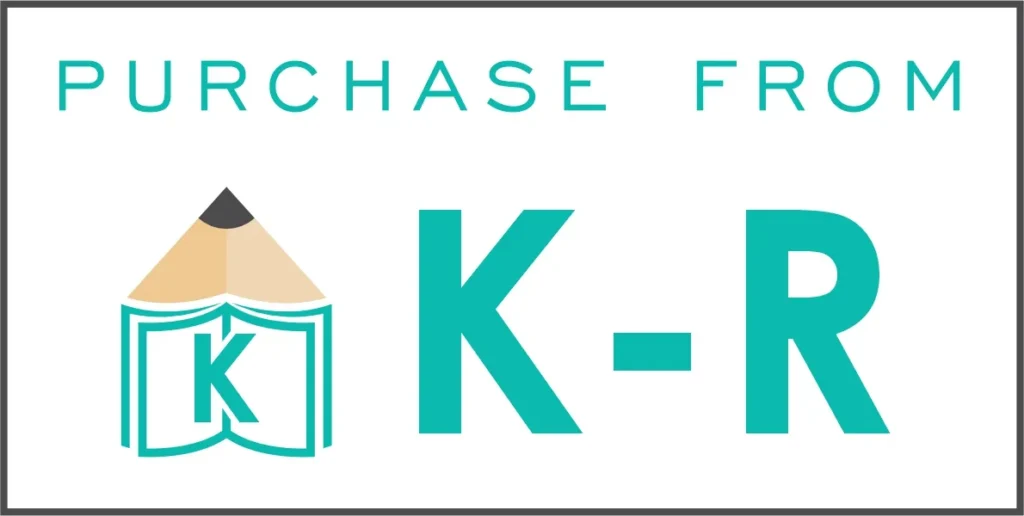
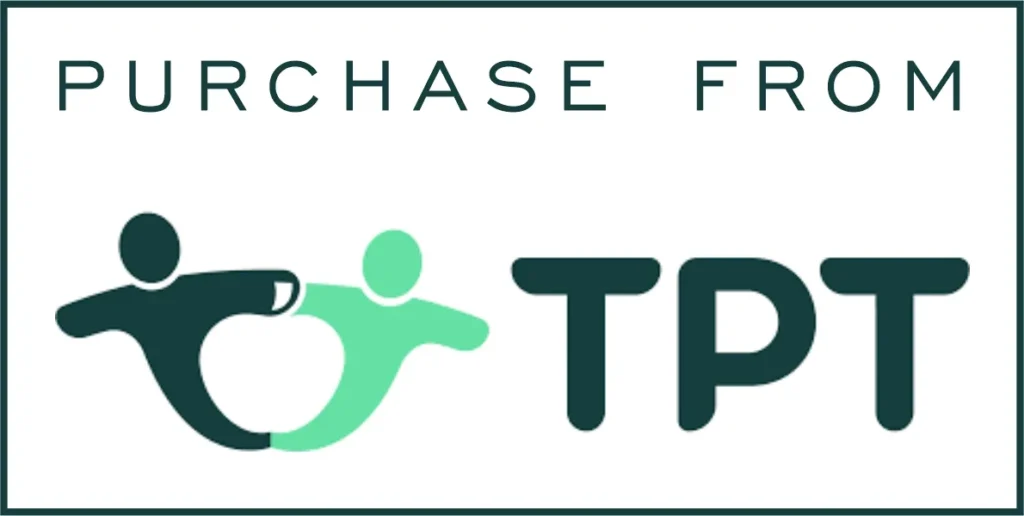

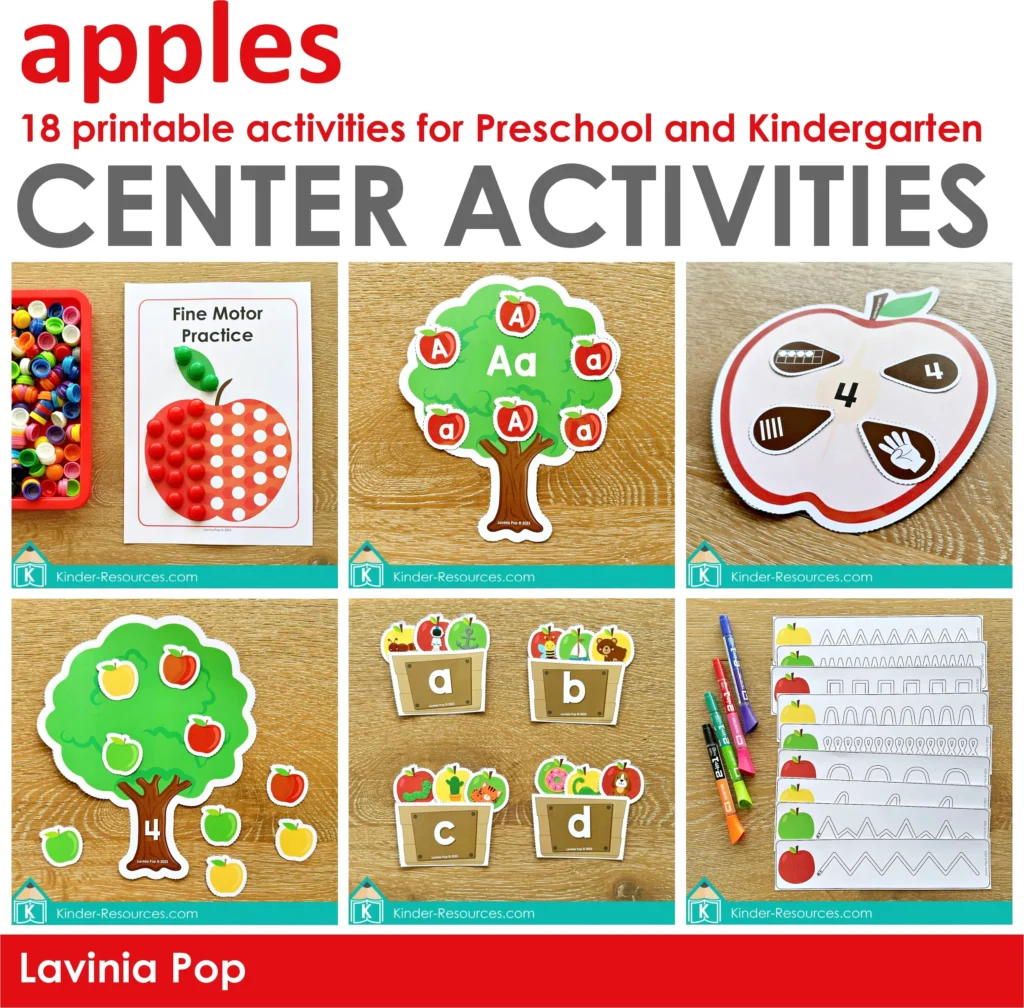
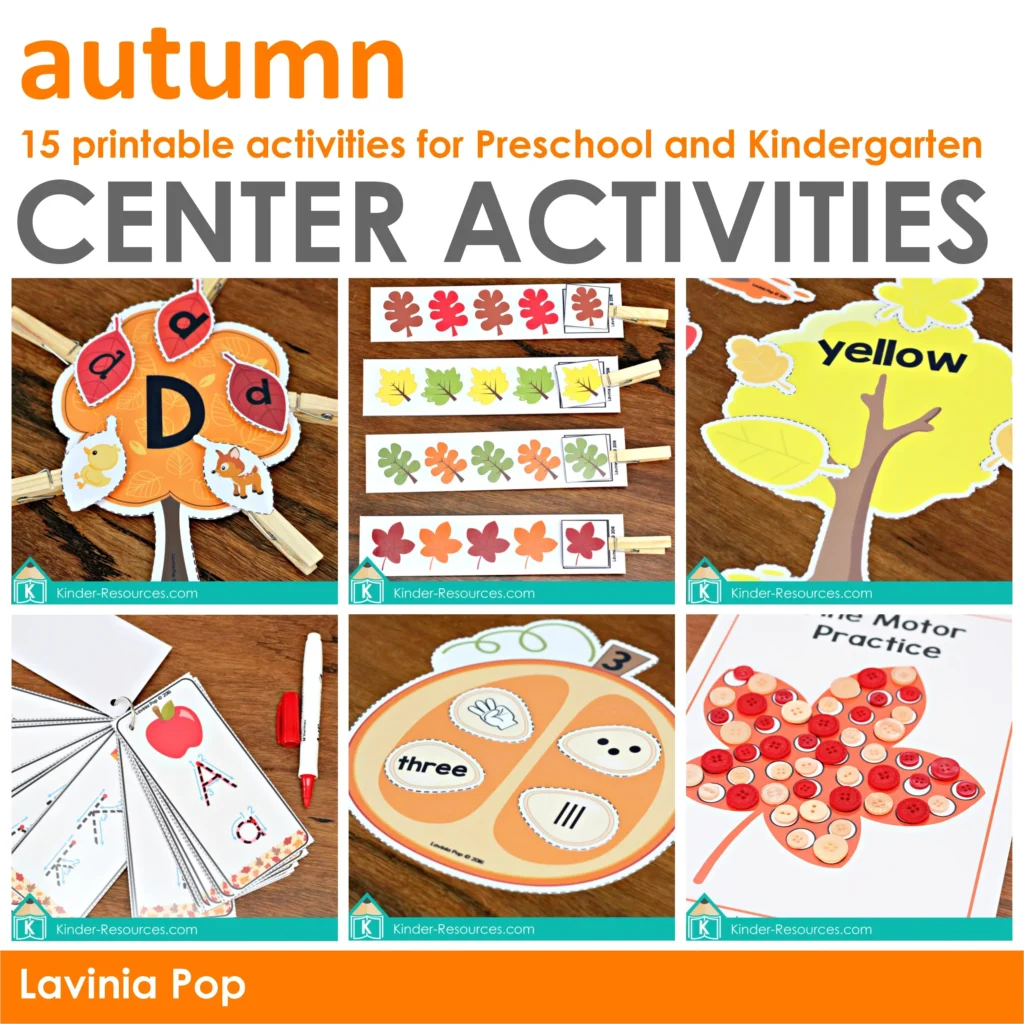
Pingback: Unit Study: Farm Animals - Pilato Projects